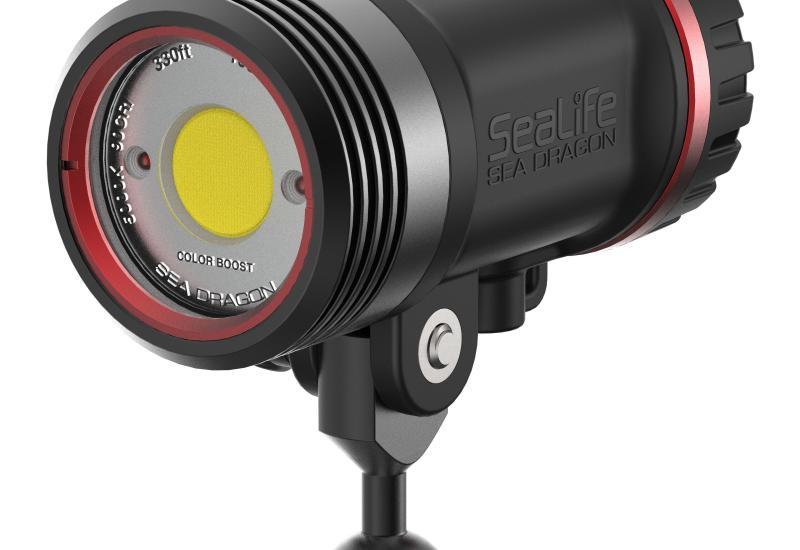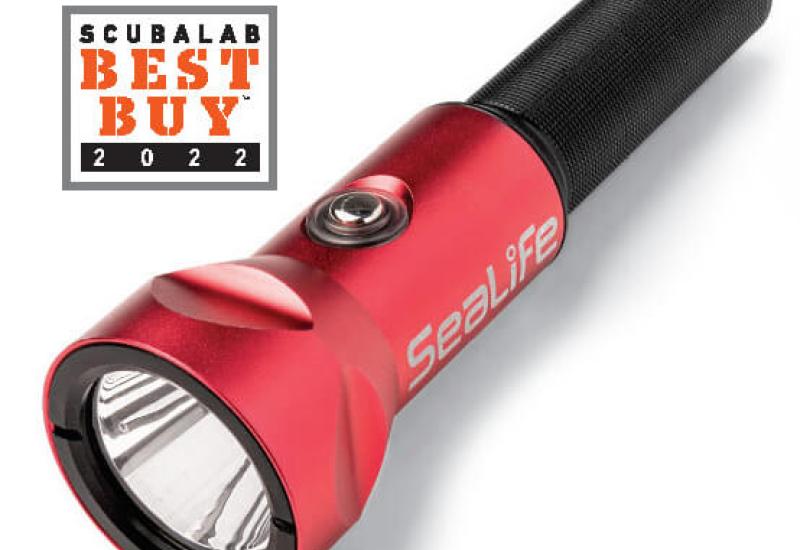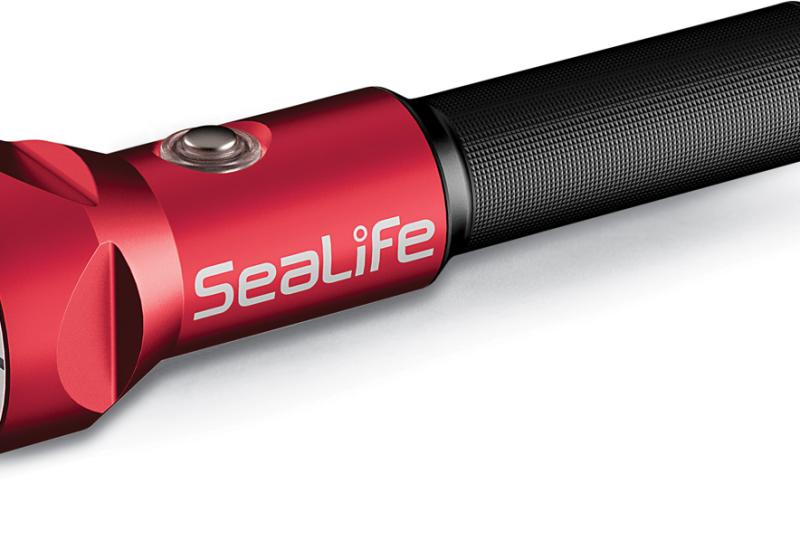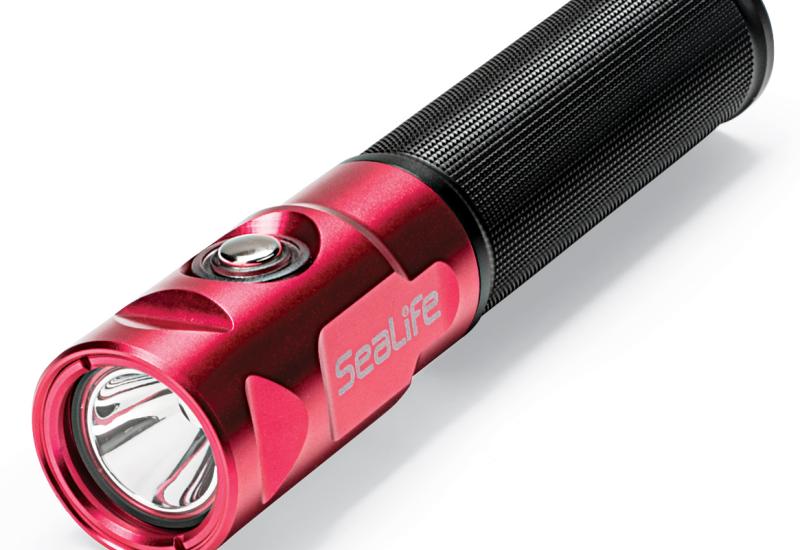What the Pros Shoot 2004
June 2004
By Stephen Frink
Put two professional photographers together in a room, and it's a safe bet that at some point the conversation will turn to camera equipment--which is exactly what happened with David Doubilet and me recently.
David, like many underwater photographers, is in the early stages of testing the digital waters and is carefully comparing what has worked for him in the past with what the market will likely demand in the future. He recognizes that National Geographic has an open mind about digital imaging, and he now has housed a Nikon D1X for his field kit. But, David is not ready to abandon his tried-and-true film capture techniques either.
Our conversation reminded me that, while the best underwater photography comes from the eye and heart, not the camera store, underwater photography is still incorrigibly techy. Those of us who make a living in pursuit of images have gear preferences defined by our personal needs and client demands. Take a look at what some of the pros are shooting today and you might get ideas for some gear to add to your own camera bag.
Stephen Frink
||||
|---|---|---|
|  |
|
| Facing a digital future, Stephen Frink ponders the past: a Rolleimarin twin-lens medium format.|
My primary tool these days is a Canon EOS-1Ds digital SLR in a Seacam housing. The 11-megapixel capture is impressive, and even superior to film in many ways, but I've not abandoned silver halide. I still love my Nikon F100 (Seacam housing), my RS with the 13mm lens, and my Nikonos with the 15mm. The array of lenses for both film and digital range from the superwide 180-degree fisheyes to the 100mm macro lens. I prefer Ikelite (Substrobe 200 and DS125) strobes, as well as Inon Z220s. However, if I had to take only one system on location, it would be my housed Canon digital, 17-40mm zoom lens, and my Ikelite 200. With this alone I could cover most any editorial assignment with topside, fish and underwater wide-angle.
David Doubilet
For his foray into digital imaging, David bought a Seacam housing for a Nikon D1X, which he will use in conjunction with his Nexus D100 housing. His trusty analog gear includes Nexus housings for both Nikon F4 and F100 housings, as well as a Nexus N90 dedicated specifically to polecam work. He uses an Aquatica F4 primarily for wide-angle and splits, and has an Aquatica F3 adapted to shoot panoramas with a Hasselblad XPan camera and either the 30mm or 45mm Zeiss lens. He also still carries a Nikonos V with 15mm, because there are some subjects that no camera handles better, even today. His strobes are primarily Sea & Sea YS200 with EO connectors (so that one strobe can connect/disconnect under water and serve several systems), but he also travels with Sea & Sea YS120, YS90 and YS30 strobes, and even a few older Sonic Research SR2000 units specifically for macro.
Doug Perrine
Doug converted early to digital, and now shoots primarily with a pair of Canon EOS 10D cameras in UK-Germany housings. He uses the standard UK-Germany ports, except for the 9-inch mineral glass Seacam superdome that he has specially adapted to his housing. For lenses, he prefers the Canon 15mm, 16-35mm, 28-135mm, 50mm macro and 100mm macro, as well as the Sigma 14mm wide-angle. He uses Ikelite DS125 and Inon Z-220 strobes. A wide assortment of Ultralight and TLC arm and ball adapters handle the strobe placement tasks, and Doug notes that his Apple G4 Powerbook is an integral part of his location toolkit, as are the sturdy Pelican cases that get the gear there intact.
Eric Hanauer
Eric is now a digital convert as well, shooting two Nikon D100 bodies in Subal housings with flat ports for macro, and the 8-inch dome for most of the wide-angle work. His lenses for underwater work include the 12-24mm zoom lens, as well as the 16mm fisheye, 60mm and 105mm Micro-Nikkor lenses. His light kit includes three Ikelite DS125 strobes and Ultralight arms.
Michael Aw
A hybrid shooter, Michael takes both film and digital cameras on assignments. For film, he prefers Nikon F100 bodies in Seacam housings, as well as a Nikonos V for backup (primarily with 15mm lens). For digital, Michael shoots with a Nikon D1X in a Seacam housing. The same ports and viewfinders work on both housings, as do his various Nikkor lenses, including the 14mm, 16mm, 18mm, 24mm, 60mm macro, 12-24mm zoom, 28-70mm zoom and 105mm macro. For strobes, Michael uses Ikelite Substrobe 200s almost exclusively, although he also carries a housed SB28DX topside strobe so he can shoot TTL with his digital camera.
Claudia Pellarini
||||
|---|---|---|
|  |
|
| Claudia Pellarini has gone digital with a Nikon D100 in a Sea & Sea housing. Photography by Leon Joubert.|
In her capacity as photo pro at Stuart Cove's Dive Bahamas, Claudia uses only digital equipment. She now shoots a Nikon D100 in a Sea & Sea housing with 16mm, 12-24mm zoom and 105mm macro lenses. Because there is so much shark activity on any single dive, she also credits high-capacity (1GB and greater) media cards as integral to her professional shooting. She uses Sea & Sea YS350 strobes. Claudia says the Fin Photo gear locker is being upgraded with Canon Digital Rebel cameras, Sigma 14mm lenses and Aquatica housings. The choice of gear in this case is linked to capturing photos of divers and Caribbean reef sharks.
Berkley White
As the owner of Backscatter Video and Photo in Monterey, Calif., Berkley has access to most lines of gear. His choice for shooting is the Light & Motion Titan housing for his Nikon D100 digital camera. As he already had various Sea & Sea ports, Berkley ordered his Titan housing with the S&S port adapter, allowing him to use his 10.5mm digital fisheye, 16mm, 12-24mm zoom, and 60mm and 105mm Micro-Nikkor lenses with this system. For ultra-macro, Berkley uses a MacroMate system, essentially an external wet diopter that slips over the flat port. This is a good solution when you want magnification greater than 1:1 for tiny critters like pygmy seashores. His strobes are Sea & Sea YS120 strobes, a Light & Motion MiniMod for focus assist, and Ultralight arms. For digital work, his travel kit also includes an Apple G4 Titanium and a pair of Lacie 40GB Firewire portable hard drives.
Brandon Cole
||||
|---|---|---|
|  |
|
| Brandon Cole shoots film in a Seacam-housed Nikon F100. Photography by Stuart Westmorland.|
Certain that his photography will edge more toward digital in the very near future, Brandon is eager to buy one of the new Canon EOS1D MKII cameras for its 8-megapixel/8-frames-per-second capture rate. But for now, he is shooting film in a Nikon F100 (housed Seacam), as well as some older housed Canon SLR cameras. His digital rig is a Fuji S2 in a Sea & Sea housing, and because it will accept Nikon lenses, he is able to use his 14mm, 16mm, 17-35mm, 12-24mm, 20mm, and 60mm and 105mm Micro-Nikkors for both film and digital. The Canon cameras require optics in much the same focal length range, and Brandon notes that carrying redundant glass for both systems is getting to be a pain. There is also a Nikonos V and 15mm for backup, which he says is "not seeing much use these days." For strobes, Brandon uses Ikelite with multiple DS200s and DS125s, all connected to his housings by means of Ultralight arms.
David Fleetham
David has gone totally digital and uses Canon D60 bodies in UK-Germany housings. He has a full complement of lenses from superwide through the 100 Canon macro USM. However, he has his eye on the future and says, "I love my gear, but it's all for sale. It's tough to keep up in these digital times." I guess constant upgrading will be a part of our lives for a while, except maybe on the strobe front. David uses Ikelite DS125s with ball joint arms.
Stuart Westmorland
Like many pros, Stuart is shooting both film and digital. For digital, he uses a Jonah housing for Canon 10D with ports for 14mm, 15mm, 16-35mm, 50 macro and 100 macro lenses. Integral to his travel kit are multiple one-gigabyte microdrive cards, a Dell Inspiron laptop with 15-inch screen, 750 megs of RAM, a 60-gigabyte hard drive and 2.2 Pentium 4 processor. For his film work, he has a Canon EOS3 (same lenses) enclosed in a UK-Germany housing, occasionally used with a 1.4x and diopter on the front of 100 macro lens. He and wife Michele use 60-quart Igloo coolers with wheels to transport underwater gear, but pack as much as they can in carry-on bags. "My carry-on rolling bag is exactly what pilots and flight attendants use, but I have added the dividers from a Pelican case to the inside of my rolling bag. This fits an amazing amount of gear and gets the weight off your back--literally!"
Jim Watt
||||
|---|---|---|
|  |
|
| Jim Watt on location in Bonaire with his Sea & Sea housing for a Canon D60 and a pair of Ikelite DS125 strobes.|
Jim is a vocal supporter of digital photography, for no reason other than the contagious excitement digital imaging brought back into his career as a stock photographer. He is constantly on the road reinventing his portfolio with a pair of Canon D60 housings in Sea & Sea housings and as many as six Ikelite DS125 strobes. Lenses include Canon 14mm, 15mm, 16-35mm zoom, 50 macro and 100 macro. Like most pro shooters, Jim also travels with a few lenses like the 70-200 zoom just for topside work, and a dedicated speedlight for strobe fill as necessary.
Tom Campbell
Tom Campbell is deeply immersed in high-definition television these days, and he finds the single-image frame grabs from this system to be amazingly high in quality. Yet, when called upon to shoot traditional stills, he uses the systems that have always worked for him in the past: three Nikon F4 cameras and two Subal housings with the appropriate domes. Lenses include a 16mm fisheye, an 18mm (his favorite for wide work), a 60mm and a 105mm for macro. Both Ikelite 200 and Sea & Sea 350 strobes handle lighting tasks, with TLC arms holding them in place. With two sets of cords for spares and a toolkit, he feels he can keep most anything working in the field.
The Bottom Line
What can we deduce from this informal, statistically insignificant survey of pro shooters?
> The traditional reliance on Nikonos cameras appears to be phasing out, except of course for the venerable 15mm, still best for some types of photography such as large marine life or broad reef scenics.
> Canon and Nikon seem to be the preferred brands, with Canon in particular making significant inroads into what was once a one-horse race. Fuji digital cameras are popular as well.
> Ikelite dominates the strobe business; although Sea & Sea, and to a lesser extent, Inon, have significant market penetration.
> Everyone surveyed is either wholly converted to, or is experimenting with, digital. However, there are other pro shooters who still clearly prefer film. Chris Newbert and Amos Nachoum are two examples who come to mind.
> Digital has clearly changed the way pro shooters archive, transmit and publish pictures. Now it seems poised to forever change the way they capture them as well.
June 2004
By Stephen Frink
Put two professional photographers together in a room, and it's a safe bet that at some point the conversation will turn to camera equipment--which is exactly what happened with David Doubilet and me recently.
David, like many underwater photographers, is in the early stages of testing the digital waters and is carefully comparing what has worked for him in the past with what the market will likely demand in the future. He recognizes that National Geographic has an open mind about digital imaging, and he now has housed a Nikon D1X for his field kit. But, David is not ready to abandon his tried-and-true film capture techniques either.
Our conversation reminded me that, while the best underwater photography comes from the eye and heart, not the camera store, underwater photography is still incorrigibly techy. Those of us who make a living in pursuit of images have gear preferences defined by our personal needs and client demands. Take a look at what some of the pros are shooting today and you might get ideas for some gear to add to your own camera bag.
Stephen Frink
|||| |---|---|---|
|| | | Facing a digital future, Stephen Frink ponders the past: a Rolleimarin twin-lens medium format.| |
David Doubilet
For his foray into digital imaging, David bought a Seacam housing for a Nikon D1X, which he will use in conjunction with his Nexus D100 housing. His trusty analog gear includes Nexus housings for both Nikon F4 and F100 housings, as well as a Nexus N90 dedicated specifically to polecam work. He uses an Aquatica F4 primarily for wide-angle and splits, and has an Aquatica F3 adapted to shoot panoramas with a Hasselblad XPan camera and either the 30mm or 45mm Zeiss lens. He also still carries a Nikonos V with 15mm, because there are some subjects that no camera handles better, even today. His strobes are primarily Sea & Sea YS200 with EO connectors (so that one strobe can connect/disconnect under water and serve several systems), but he also travels with Sea & Sea YS120, YS90 and YS30 strobes, and even a few older Sonic Research SR2000 units specifically for macro.
Doug Perrine
Doug converted early to digital, and now shoots primarily with a pair of Canon EOS 10D cameras in UK-Germany housings. He uses the standard UK-Germany ports, except for the 9-inch mineral glass Seacam superdome that he has specially adapted to his housing. For lenses, he prefers the Canon 15mm, 16-35mm, 28-135mm, 50mm macro and 100mm macro, as well as the Sigma 14mm wide-angle. He uses Ikelite DS125 and Inon Z-220 strobes. A wide assortment of Ultralight and TLC arm and ball adapters handle the strobe placement tasks, and Doug notes that his Apple G4 Powerbook is an integral part of his location toolkit, as are the sturdy Pelican cases that get the gear there intact.
Eric Hanauer
Eric is now a digital convert as well, shooting two Nikon D100 bodies in Subal housings with flat ports for macro, and the 8-inch dome for most of the wide-angle work. His lenses for underwater work include the 12-24mm zoom lens, as well as the 16mm fisheye, 60mm and 105mm Micro-Nikkor lenses. His light kit includes three Ikelite DS125 strobes and Ultralight arms.
Michael Aw
A hybrid shooter, Michael takes both film and digital cameras on assignments. For film, he prefers Nikon F100 bodies in Seacam housings, as well as a Nikonos V for backup (primarily with 15mm lens). For digital, Michael shoots with a Nikon D1X in a Seacam housing. The same ports and viewfinders work on both housings, as do his various Nikkor lenses, including the 14mm, 16mm, 18mm, 24mm, 60mm macro, 12-24mm zoom, 28-70mm zoom and 105mm macro. For strobes, Michael uses Ikelite Substrobe 200s almost exclusively, although he also carries a housed SB28DX topside strobe so he can shoot TTL with his digital camera.
Claudia Pellarini
|||| |---|---|---|
|| | | Claudia Pellarini has gone digital with a Nikon D100 in a Sea & Sea housing. Photography by Leon Joubert.| |
Berkley White
As the owner of Backscatter Video and Photo in Monterey, Calif., Berkley has access to most lines of gear. His choice for shooting is the Light & Motion Titan housing for his Nikon D100 digital camera. As he already had various Sea & Sea ports, Berkley ordered his Titan housing with the S&S port adapter, allowing him to use his 10.5mm digital fisheye, 16mm, 12-24mm zoom, and 60mm and 105mm Micro-Nikkor lenses with this system. For ultra-macro, Berkley uses a MacroMate system, essentially an external wet diopter that slips over the flat port. This is a good solution when you want magnification greater than 1:1 for tiny critters like pygmy seashores. His strobes are Sea & Sea YS120 strobes, a Light & Motion MiniMod for focus assist, and Ultralight arms. For digital work, his travel kit also includes an Apple G4 Titanium and a pair of Lacie 40GB Firewire portable hard drives.
Brandon Cole
|||| |---|---|---|
|| | | Brandon Cole shoots film in a Seacam-housed Nikon F100. Photography by Stuart Westmorland.| |
David Fleetham
David has gone totally digital and uses Canon D60 bodies in UK-Germany housings. He has a full complement of lenses from superwide through the 100 Canon macro USM. However, he has his eye on the future and says, "I love my gear, but it's all for sale. It's tough to keep up in these digital times." I guess constant upgrading will be a part of our lives for a while, except maybe on the strobe front. David uses Ikelite DS125s with ball joint arms.
Stuart Westmorland
Like many pros, Stuart is shooting both film and digital. For digital, he uses a Jonah housing for Canon 10D with ports for 14mm, 15mm, 16-35mm, 50 macro and 100 macro lenses. Integral to his travel kit are multiple one-gigabyte microdrive cards, a Dell Inspiron laptop with 15-inch screen, 750 megs of RAM, a 60-gigabyte hard drive and 2.2 Pentium 4 processor. For his film work, he has a Canon EOS3 (same lenses) enclosed in a UK-Germany housing, occasionally used with a 1.4x and diopter on the front of 100 macro lens. He and wife Michele use 60-quart Igloo coolers with wheels to transport underwater gear, but pack as much as they can in carry-on bags. "My carry-on rolling bag is exactly what pilots and flight attendants use, but I have added the dividers from a Pelican case to the inside of my rolling bag. This fits an amazing amount of gear and gets the weight off your back--literally!"
Jim Watt
|||| |---|---|---|
|| | | Jim Watt on location in Bonaire with his Sea & Sea housing for a Canon D60 and a pair of Ikelite DS125 strobes.| |
Tom Campbell
Tom Campbell is deeply immersed in high-definition television these days, and he finds the single-image frame grabs from this system to be amazingly high in quality. Yet, when called upon to shoot traditional stills, he uses the systems that have always worked for him in the past: three Nikon F4 cameras and two Subal housings with the appropriate domes. Lenses include a 16mm fisheye, an 18mm (his favorite for wide work), a 60mm and a 105mm for macro. Both Ikelite 200 and Sea & Sea 350 strobes handle lighting tasks, with TLC arms holding them in place. With two sets of cords for spares and a toolkit, he feels he can keep most anything working in the field.
The Bottom Line
What can we deduce from this informal, statistically insignificant survey of pro shooters?
> The traditional reliance on Nikonos cameras appears to be phasing out, except of course for the venerable 15mm, still best for some types of photography such as large marine life or broad reef scenics.
> Canon and Nikon seem to be the preferred brands, with Canon in particular making significant inroads into what was once a one-horse race. Fuji digital cameras are popular as well.
> Ikelite dominates the strobe business; although Sea & Sea, and to a lesser extent, Inon, have significant market penetration.
> Everyone surveyed is either wholly converted to, or is experimenting with, digital. However, there are other pro shooters who still clearly prefer film. Chris Newbert and Amos Nachoum are two examples who come to mind.
> Digital has clearly changed the way pro shooters archive, transmit and publish pictures. Now it seems poised to forever change the way they capture them as well.










